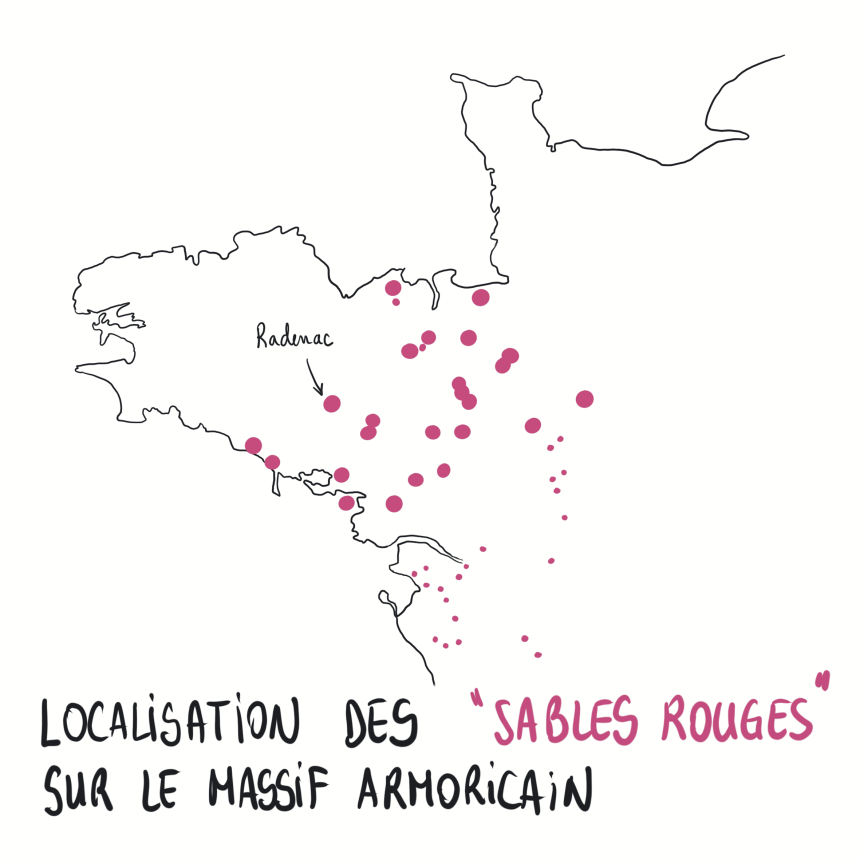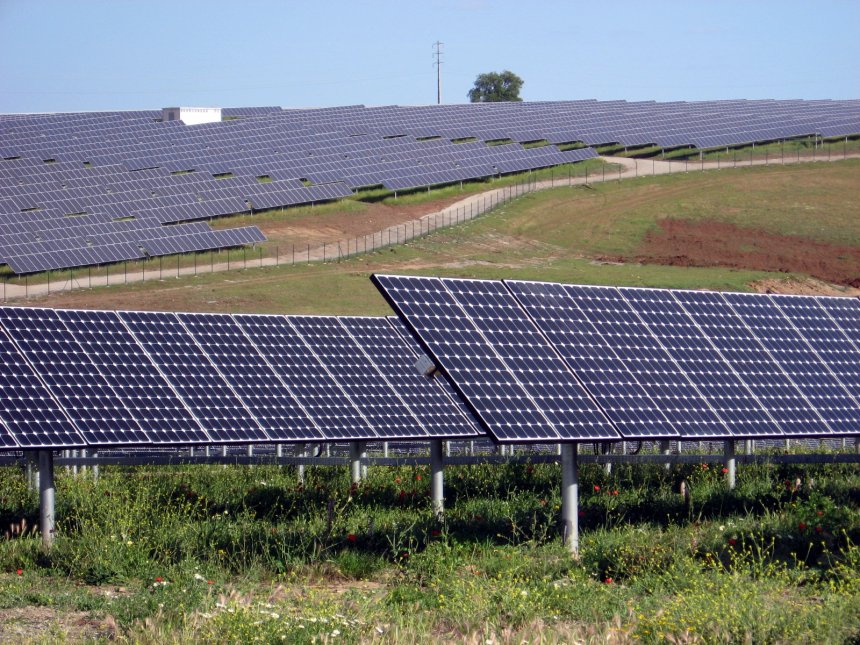Rock: sand
Type: sediment
Age: between 7 and 3.5 Ma
Quarry: Moulin de Radenac (Morbihan)
Rock: red siltstone
Type: metamorphic rock
Age: 480 Ma
Quarry: Trékoët in Muel (Ille-et-Vilaine)
Sand: a highly sought-after material
The sands of Radenac have been quarried since the early 20th century. These river sands are highly prized for concrete production. Every year, humanity consumes more than 50 billion tons (80% of which is for concrete manufacturing). This represents a one-meter-thick layer of sand spread over all of Brittany. Sand is the second most used material on Earth after water.
The red siltstone of Muel
The Muel quarry is operated by Pompéi, a public works company established in Brittany for 100 years. The quarry, opened in 1948, mainly supplies aggregates for roadworks. The quarry is still active. Geologically, these siltstones belong to the “Pont-Réan schists” formation (see installation 12).
In an abandoned ria
The “red sands” quarried at Radenac are ancient sedimentary deposits formed at the bottom of a deep valley near an estuary (ria or aber). Their presence, at more than 80 meters in altitude, testifies to changes in sea level and thus climatic changes. Contemporary deposits outcrop here and there in the Armorican Massif. At that time, the island of Brittany (yes, it was an island) enjoyed a humid subtropical climate, similar to Florida.
Sand, photovoltaic: silicon, my love
The quarry is no longer and will no longer be exploited. An ecological, landscaping, and agricultural redevelopment project is under study, which also includes the creation of a photovoltaic power plant. Clearly, silicon is everywhere. It makes up both the quartz grains in the sand and the cells in solar panels.


